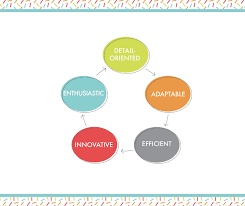In an era of rapid technological advancements, educational institutions increasingly incorporate automated technical assessments into their programs to prepare students for the dynamic job market. This shift holds promise in streamlining evaluation processes but also presents challenges.
This article will explore the pros, cons, and best practices associated with automating technical assessments from talent assessment tools like Testlify in college settings.
Pros of Automating Technical Assessments in Colleges
-
Real-world Readiness:
Automated technical assessments simulate real-world scenarios, providing students with hands-on experiences that closely mirror the challenges they will face in the professional sphere. This approach bridges the gap between academic knowledge and practical application.
-
Efficiency and Standardization:
Automated assessments enable colleges to efficiently evaluate large cohorts of students consistently. Standardized tests can ensure that all students undergo a uniform evaluation process, facilitating fair and objective comparisons.
-
Immediate Feedback:
Automated systems can provide instant feedback to students, allowing them to identify areas for improvement promptly. This enhances the learning experience and empowers students to take an active role in their skill development.
-
Data-Driven Insights:
Colleges can leverage the data generated by automated assessments to gain insights into their students' performance. Analyzing this data helps educators identify trends, assess the effectiveness of teaching methods, and tailor curricula to meet evolving industry demands.
Cons of Automating Technical Assessments in Colleges
-
Limited Context:
Automated assessments may need help to capture the full context of a student's problem-solving approach. Some solutions may be correct, but their reasoning or methodology might be overlooked, potentially hindering a comprehensive understanding of a student's capabilities.
-
Potential for Cheating:
As with any form of assessment, there is a risk of cheating in automated systems. Students may find ways to manipulate the system or collaborate with others, compromising the integrity of the evaluation process.
-
Focus on Individual Performance:
While individual assessments are valuable, they may not capture the collaborative nature of many workplaces. Automated assessments may inadvertently prioritize individual performance over teamwork and communication skills, which are vital in a professional setting.
-
Technological Barriers:
Implementing automated assessments requires access to technology and a certain level of digital literacy. Colleges must ensure all students have equal opportunities to participate, addressing potential disparities in technology access.
Best Practices for Automating Technical Assessments in Colleges
Combine Automated and Human Assessments:
Striking a balance between automated assessments and human-involved evaluations is essential. Consider integrating automated assessments as part of a broader evaluation strategy that includes interviews, projects, and other assessment forms.
Provide Clear Guidelines:
Communicate the purpose, format, and expectations of automated assessments to students. Providing guidelines helps set expectations and ensures that students approach assessments with a clear understanding of what is being evaluated.
Emphasize Soft Skills:
While technical skills are crucial, ensure that assessments address soft skills such as communication, collaboration, and problem-solving within a team. This ensures a well-rounded evaluation that prepares students for diverse professional environments.
Regularly Update Assessments:
The technology landscape evolves rapidly, and so should assessments. Regularly update assessment content to reflect current industry trends and technologies, ensuring students have the latest knowledge and skills.
Implement Security Measures:
To address concerns about cheating, incorporate security measures into the automated assessment process. Techniques such as randomized question sets, time limits, and plagiarism checks can help maintain the integrity of the evaluation.
Conclusion
Automating technical assessments in colleges holds immense potential for enhancing education and employability. By embracing the advantages of efficiency, consistency, and immediate feedback from talent assessment tools like Testlify, educational institutions can better prepare students for the demands of the professional world.
However, it is crucial to navigate the challenges thoughtfully, ensuring that soft skills assessment captures the essential soft skills. By following best practices, colleges can harness the power of automation to create a holistic assessment approach that aligns with the evolving needs of the tech industry and beyond.


No comments yet